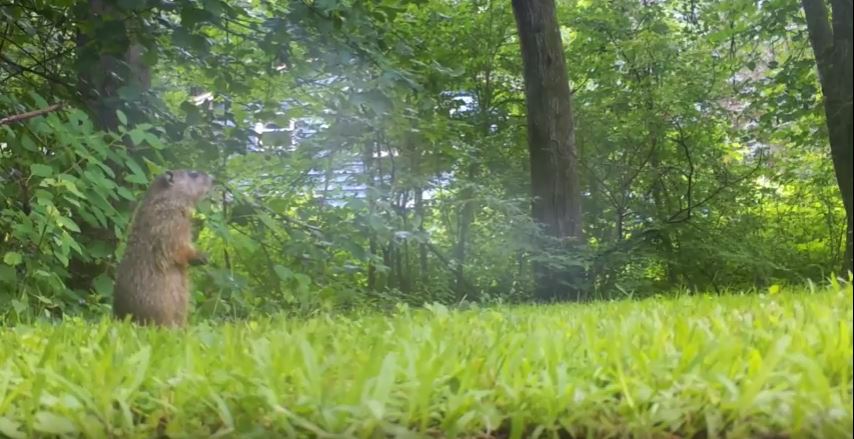How do you know if you have a groundhog under your shed or porch?

You can be able to identify groundhogs because of their appearance, their behavior and their habitat. You can also identify them by the damage that they can cause. Once you have identified them in your yard, the garden pests can be easily controlled so as to minimize damage to the landscape.
One of the ways you can tell that there is a groundhog under the porch or shed is by spotting the animal. Groundhogs are larger than moles and their head and body average 16-20 inches. They also have a very furry tail that is around 4-7 inches. Their fur is grayish or brownish. Their legs are short and the body stout. The front feet have curved claws that are long and this is what they use for burrowing.
Groundhogs will appear from the dens in order to feed, especially in the evening hours and the early morning hours. They are herbivorous, feeding on vegetables and grasses. They can also be active in the daylight and you can observe them as they communicate with barks, clicks, squeals and whistles. They usually hibernate when winter falls. Due to the fact that they love vegetables, you may notice their damage if you have a garden.
You may also notice burrows beneath your porch or shed. Usually, the opening of such a groundhog burrow will be around 10-12 inches and it will have a dirt mound at the front. The mounds may be under the porch or shed and other areas such as a fence or the foundation. They may also have secondary entrances, but these may not have any dirt mounds around them. The tunnels can be up to 5 feet deep and they can range from around 8-66 feet long. These tunnels are hard to follow.
The mounds that groundhogs leave damage people’s lawns. Groundhogs can claw and gnaw trunks and fruit tree stems. Ornamental shrubs are also not spared and there may be a lot of damage that you can notice around your property if there is a groundhog living under the porch or shed. The animal also eats different garden plants like peas, squash and beans. It is important to note that groundhogs are usually in hibernation starting from November up to late February and damage during this time could be caused by other animals.
Go back to the How to Get Rid of Groundhogs page or email us if you have any other questions about How do you know if you have a groundhog under your shed or porch?
About Us
We are the Pest Education Network, a non-profit organization that focuses on wildlife and pest removal education. Our approach utilizes Integrated Pest Management, a strategy advocating prevention and humane methods.


